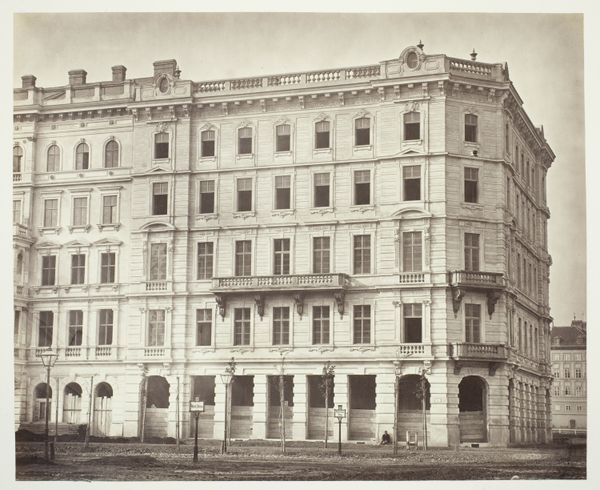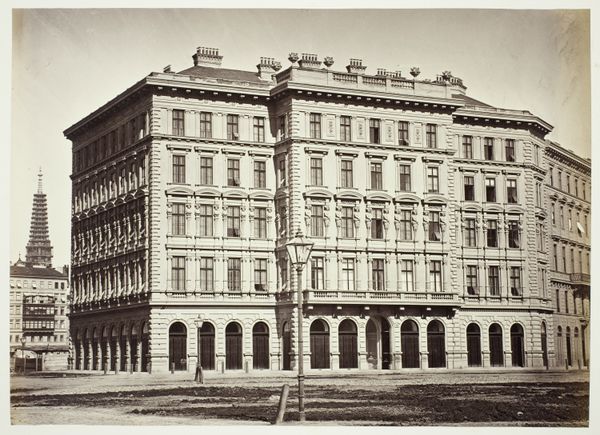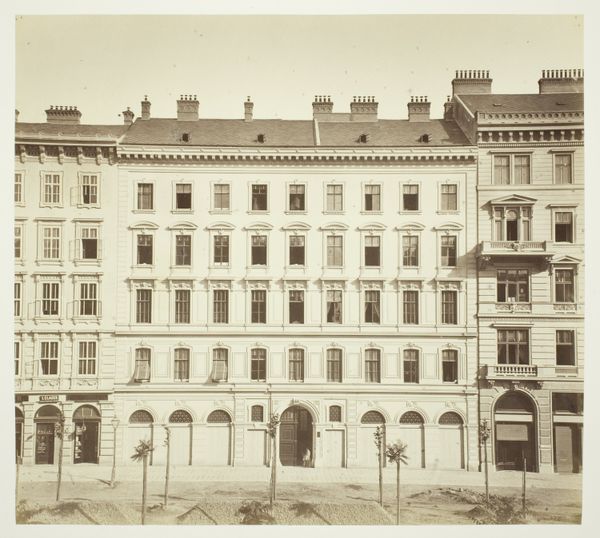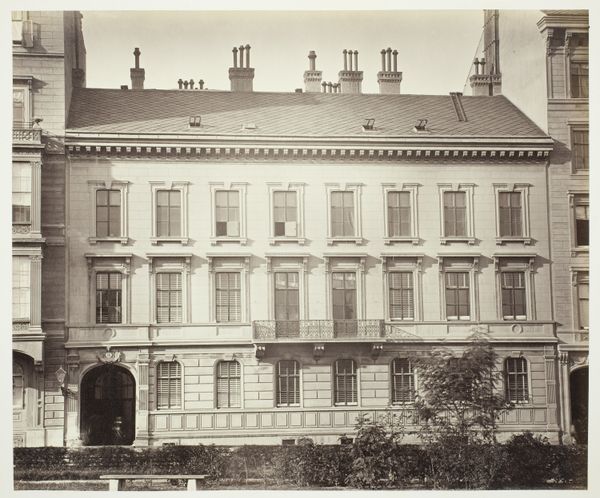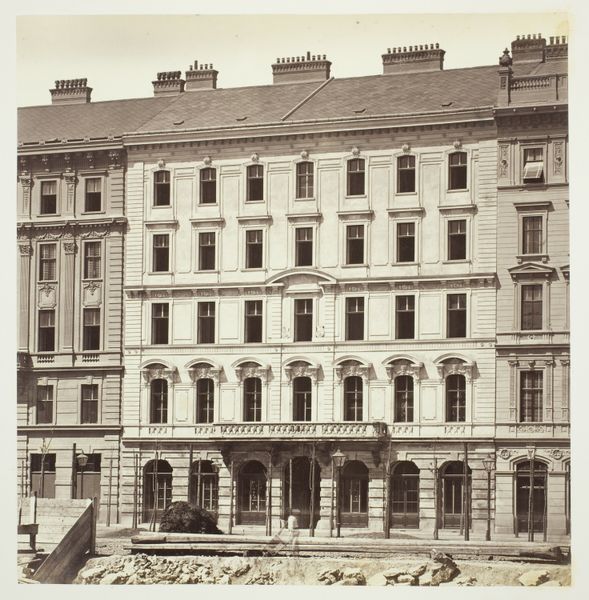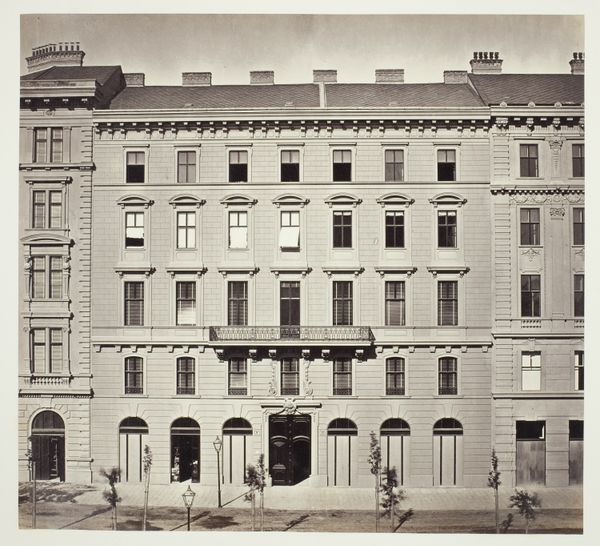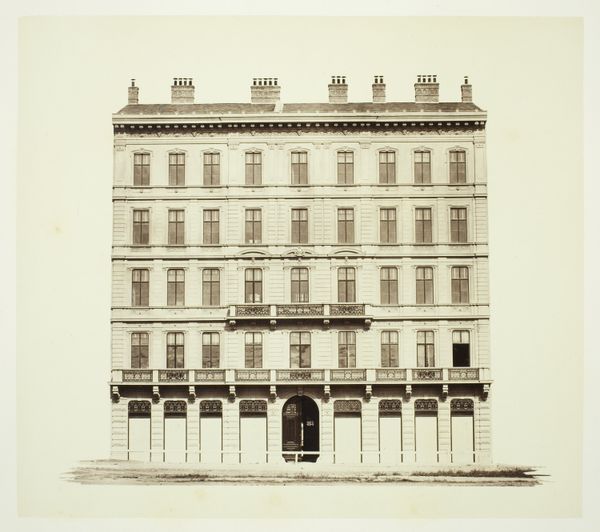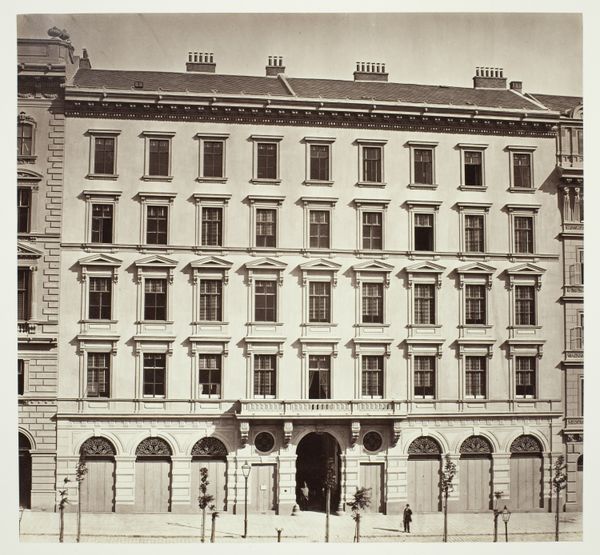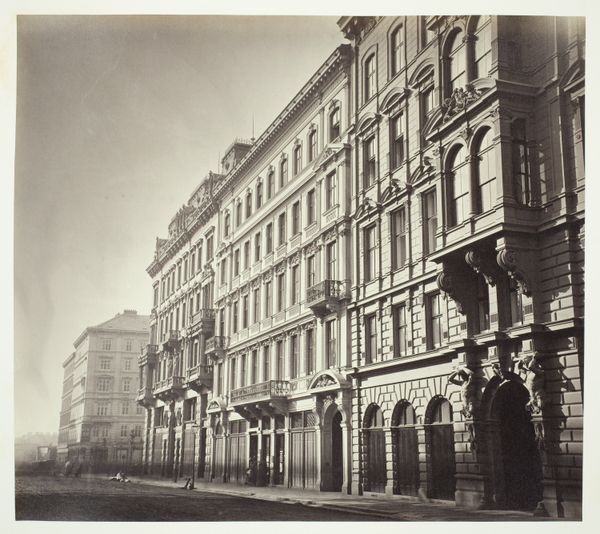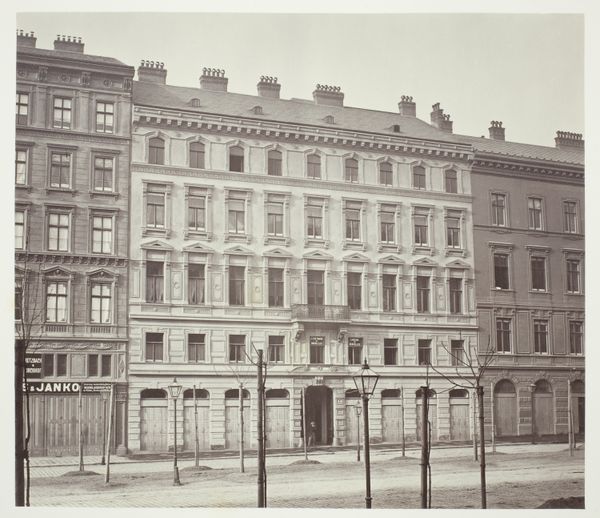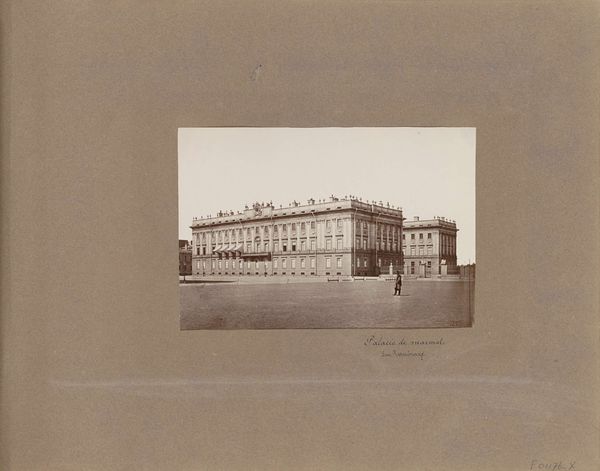
Babenberger Strasse No. 1 und 3, Zinshaus des J. Ritter von Königswarter c. 1860s
0:00
0:00
silver, print, daguerreotype, photography, architecture
#
16_19th-century
#
silver
# print
#
daguerreotype
#
photography
#
cityscape
#
architecture
Dimensions: 21.5 × 33.6 cm (image/paper); 42.7 × 61.2 cm (album page)
Copyright: Public Domain
Curator: Here we have a photograph, circa 1860s, showing the Zinshaus des J. Ritter von Königswarter, located on Babenberger Strasse in Vienna. Editor: It feels oddly…stark. The symmetry is impressive, but the lack of people truly present flattens it. A facade, almost. Curator: Indeed. The daguerreotype process, rendering the image in silver, emphasizes precise detail and architectural form. Consider how the repetitive arches and window frames create a grid, punctuated by the ornate detailing above each window. Editor: But silver too implies wealth. We're seeing the carefully constructed face of bourgeois Vienna, documented via cutting edge, expensive technology. It’s not just a building, it's a statement of power captured in the making by anonymous laborers preparing the silver and chemicals, then sold for someone’s profit. Curator: And yet, even within that, the light! See how it catches the cornices, throwing precise shadows that define depth? The interplay between light and shadow articulates volume and establishes the structure as almost mathematically pure. Editor: Perhaps. Though for me, it's impossible to look past the heavy materiality – the dirt patch in front that the structure attempts to hide. This stark ground makes the architecture itself into a kind of manufactured stage, highlighting its deliberate, almost aggressive presentation of success. Look at the tiny anonymous figures at the entrance, dwarfed by the scale. Curator: You highlight the tensions inherent in representing burgeoning capitalism, absolutely. We see both a meticulous construction of societal facades and the very material underpinnings on which they are built in early photographs like these. Editor: It is a fascinating contrast between artistic representation and industrial documentation, creating layers for historical study. Curator: Ultimately, in its sharp lines and graded tones, the image functions on a plane of formalism, almost severing itself from its environment and historical context. Editor: Whereas, for me, its profound achievement lies precisely in exposing the constructed artifice embedded within even the most “objective” recordings of the physical world.
Comments
No comments
Be the first to comment and join the conversation on the ultimate creative platform.
